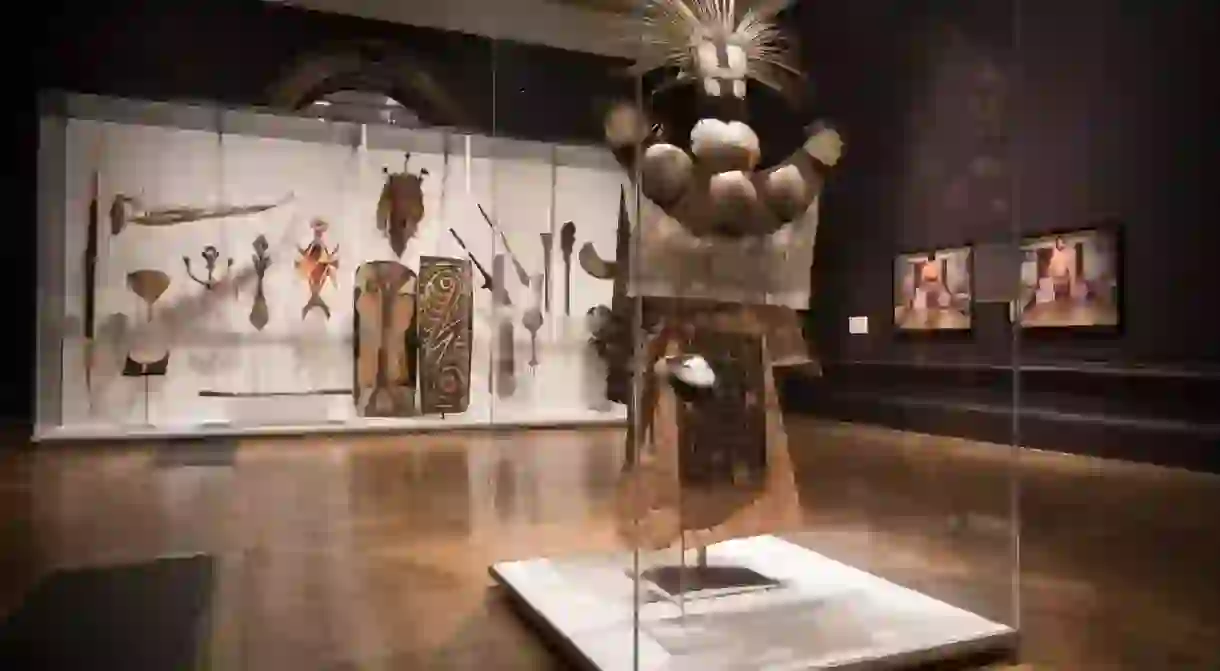‘Oceania’ Celebrates Art From the Pacific

Exploring both the traditional and contemporary art of Pacific Islanders, Oceania brings the expanse of Melanesia, Micronesia and Polynesia together in a presentation of over 200 works. Culture Trip delves into the creative endeavours from this vast region.
The Royal Academy of Arts (RA) continues to celebrate its 250th anniversary with Oceania, an epic exhibition that condenses the enormity of the area – which covers almost a third of the world’s surface – into around 200 extraordinary exhibits. The show is all the more pertinent as it coincides with the anniversary of Captain James Cook’s 1768 voyage to the Pacific that had untold effects on this region and the people who lived there.

You might also like: Don’t Miss These Autumn Blockbuster Exhibitions in London
The success of the exploration is often overshadowed by the devastation, exploitation and oppression of indigenous peoples that occurred. Many of the exhibits here could easily be regarded as mere ethnographic trophies, but Oceania repositions them as artistic objects. Here we get to discover the creative output of various cultures through their daily and religious rituals in a way that will rid them of any ‘mysterious’ and ‘exotic’ labels.
Covering 500 years of art from locations including New Guinea, Easter Island and Hawaii, visitors can expect to encounter a wide variety of exhibits, from a 14th-century wood carving found in New Zealand to Marshall Islands spoken word artist Kathy Jetñil-Kijiner’s affecting performance of her poem ‘Tell Them’ (2012). Here are our highlights of this enlightening exhibition, divided into thematic presentations including ‘Voyaging’, ‘Place-Making’ and ‘Encounter’.
‘Feather god image’ (late 18th century)
Made from human hair, feathers, shell and dog teeth, this sculpture, which depicts an Hawaiian god, was gifted to Cook in 1779, the year he died. Hawaiians believed their gods to be covered in feathers and would have made these objects to inspire warriors in battle or for use during ceremonial rituals. The use of red feathers is particularly key as this was considered a sacred colour in the Pacific, and specialist craftsmen would have been charged with making these important sculptures.

Lisa Reihana, ‘in Pursuit of Venus [infected]’ (2015-2017)
Lisa Reihana’s single-channel video reinterprets the French painter Jean-Gabriel Charvet’s 20-panel wallpaper design Les Sauvages de la Mer Pacifique (The Native Peoples of the Pacific Ocean, c. 1804) – which depicts Cook’s, Louis Antoine de Bougainville’s and Jean-François de Galaup La Pérouse’s Pacific explorations – with uncanny accuracy. Presented in rolling panoramic form, the film incorporates the environments, customs and inhabitants from various islands, including the Nootka Island, Raiatea, Ha‘apai, Tahiti and New Caledonia, recreating the utopian ideals of the original as well as highlighting the realities it omitted.
![Installation view of Lisa Reihana’s single-channel video ‘in Pursuit of Venus [infected]’ (2015-2017) at the Royal Academy of Arts](https://cdn-v2.theculturetrip.com/10x/wp-content/uploads/2018/10/lisa-reihana-oceana-install.webp?quality=1)
‘Canoe prow figure nguzunguzu’ (1929)
Made in 1929, this small wooden carving would sit on the prow of a tomoko, or war canoe, from the Solomon Islands. A tomoko was an impressively decorated canoe that would have been paddled by more than 20 warriors. The ornately carved prow figure features a pigeon, an important symbol as it reflects navigational proficiency.

Mata Aho Collective, ‘Kiko Moana’ (2017)
The show at the RA opens with the powerful installation Kiko Moana by Mata Aho Collective. The four Maori women – Erena Baker, Sarah Hudson, Bridget Reweti and Terri Te Tau – are graduates of Massey University in New Zealand and formed their group in 2012 to explore the “concepts of mana wahine (the power of Maori women) and matauranga Maori (Maori knowledge and learning)” through their art practice. Initially made for the exhibition Documenta 14 (2017) in Germany, Kiko Moana is 11 metres (36 feet) of blue tarpaulin woven using the traditional techniques of Maori women, and floods the central octagonal entrance gallery.

Oceania is at the Royal Academy of Arts until 10 December 2018. Tickets are £20, with concessions available.
The exhibition will then move to the Musée du quai Branly – Jacques Chirac in Paris from 12 March 2019 to 7 July 2019.
You might also like: Cornelia Parker’s ‘PsychoBarn’ in the RA’s Courtyard













